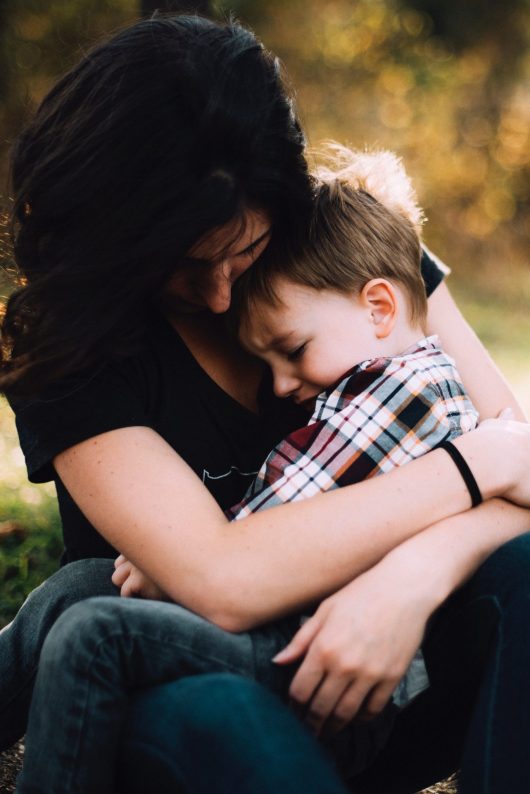
If Gentle Discipline Isn’t Working, This Might Be the Reason
If you’re reading here because you’re committed to guiding your child’s behavior without spankings or punishments, I salute you, especially if you were punished as a child and are looking for a better way.
Setting limits without punishments works. In fact, it works so beautifully that you’ll find you need to set fewer and fewer limits, especially once the toddler years have passed. Many of you have sent me inspiring stories about the positive results you are experiencing, often immediately.
I also hear a lot about what isn’t working from parents who believe they are practicing gentle discipline. Parents share about behavior that might have started as minor testing but has become more aggressive, destructive, defiant or deliberate. I hear about needy, demanding five year olds, preschoolers intentionally hurting their peers, and children who seem either fragile or angry much of the time.
Parents wonder: How can my child keep acting this way when I’m committed to respectful, non-punitive guidance?
I had a sudden inkling about the reason while re-reading blogger Suchada Eickemeyer’s post: “The Most Valuable Parenting Phrase After ‘I Love You’”. The important phrase she refers to is, “I won’t let you.” Suchada remarks, “This phrase has helped me become the disciplinarian I want to be: in charge, but not controlling; gentle, but firm; honest; clear; and direct.”
There seems to be a common misconception that gentle, non-punitive discipline means avoiding a direct confrontation with the child rather than providing the simple, connected response children need when, for example, they hit the dog. In this case, appropriate discipline would mean getting down on the floor next to the child, making eye contact and saying calmly, “I won’t let you hit the dog, that hurts” while holding the child’s hand or otherwise blocking the hit.
My sense is that many parents over-complicate this issue, perhaps because of confusion about some of the terms commonly used in regard to discipline, terms like ‘connection’, ‘unmet needs’ and ‘playful’.

Connection
Yes, children need to feel connected for discipline to be successful. But how? When I hear the word ‘connection’, hugging, laughing and running through grass together come to mind, not saying “no” and possibly upsetting my child. Connection during boundary setting doesn’t look warm and fuzzy, but it is crucial. Here are the two most important ways to connect:
1. Just talk to your child
Most of the advice I hear about setting limits suggests wording that subtly skirts a direct confrontation and distances us when we should be connecting. The verbal examples are commonly in third person, “it is not okay to…”, “Mommy doesn’t like it when you…”, or “Joey isn’t allowed to…” Then there’s the philosophical approach: “Faces are not for slapping”, “Streets are not for running into”, “Friends are not for biting”. Or, the royal “we”: “We don’t throw food” (while our perceptive toddlers are thinking, “well, some of us don’t”).
Personally, I’m even a little uncomfortable with “Honey (or Sweetie, or Pumpkin), don’t hurt the dog.” Terms of endearment at times like these sound phony and patronizing to me, especially if the adult is feeling annoyed while faking calm and affection.
“I won’t let you” (or “I can’t let you” or “I don’t want you to”) instantly connect us person-to-person and clarify our expectations. This is the connection children need first and foremost when they misbehave. Toddlers don’t miss a trick, so they need (and deserve) a respectful, straight answer. We can run through the grass together afterwards.
2. Acknowledge and empathize
Children need their perspective and feelings acknowledged when we are setting limits. (I describe this in detail in “The Key To Your Child’s Heart”.) It is usually best to empathize after first setting the limit (“I won’t let you”). But empathy means understanding and supporting, not going down with the ship. In other words, reflect verbally, (“You were upset about not getting another cracker”, or “you wanted my attention when I was busy talking to Grandma, so you threw the food”), but don’t get upset or discouraged when your child has an emotional reaction to your limits. That level of connection isn’t healthy for either of us. It wears us out and clouds our perspective, making effective guidance less possible, and our child is without the strong anchor she needs.
Unmet needs
By the time they are 18 months of age, most children are fully aware of many of the things we don’t want them to do. So, why do they do them? There are many possibilities to consider, but only after we fulfill the child’s number one need in that moment of limit-pushing behavior. If we hesitate to set a limit with conviction because we’re trying to figure out what is driving our child’s behavior, he or she is left with a faltering, vague or inconclusive message instead of real help.
The most common need children have when they act out is our attention, beginning with a very specific kind of attention — a kind but firm acknowledgement of their behavior and of our expectation.
Playful
Anyone who knows me can tell you that I’m a silly, playful person and parent. I love the genuine, spontaneous playfulness and joking that happens with children when I feel confident about my leadership. Playfulness is wonderful when we’re “feeling it”, and it helps us encourage cooperation for cleaning up toys or brushing teeth. But I don’t advise playfulness as a technique for limit setting when it replaces (or dances around) the connected, honest, clear response children need.
I also think advising playfulness imposes even more pressure on parents to keep children happy all the time, which most of us would do if we thought it possible or healthy or the route to true happiness. But always smiling isn’t real life or a real relationship. Our kids know better, and they deserve both.
